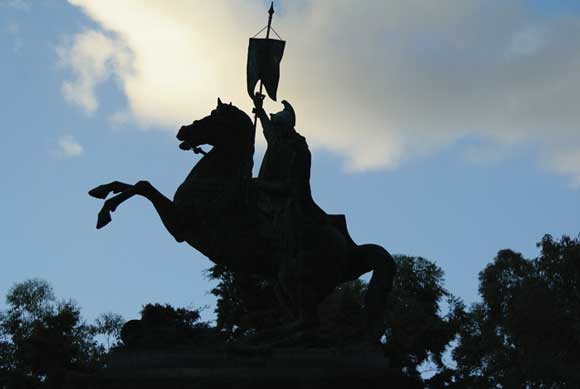Who was St. James?
La Antigua Guatemala was founded as Santiago de Guatemala (St. James of Guatemala). Located previously at the Kaqchikel site of Iximché in 1524 and then next door to Ciudad Vieja (San Miguel Escobar) in 1527, the first city council met in this valley on March 10, 1543.
Since St. James is the patron saint of Spain and was the patron saint of the conquerors, many cities throughout colonial Spanish America were named after him. When the capital was moved to Guatemala City in 1774, the “old” Santiago de Guatemala was referred to as “La Antigua Guatemala.”
St. James was certainly one of the 12 apostles. He was John the Apostle’s brother and is also known as “James the Greater” to distinguish him from James the Less. St. James was one of the first apostles to join Jesus. James, it appears, was executed by sword.
His remains are said to be in Santiago de Compostela, Spain. That town is considered one of the most holy towns in Catholicism (after Jerusalem and Rome). The traditional pilgrimage to his grave is known as the Way of St. James and was the most popular pilgrimage in the Middle Ages. Many would say that tourism began here!
How St. James got to Spain might be intriguing: (1) that St. James preached in Iberia as well as in the Holy Land; (2) that after his martyrdom, his disciples carried his body by sea to Iberia or (3) legend has it that after being decapitated in Jerusalem, his body was taken by angels and sailed on an unattended boat to Iberia, where a massive rock closed around his relics which were later removed to Compostela.
For Spanish America, the conquerors “knew” that he miraculously appeared to fight for the Christian army during the battle of Calvijo (and hence called matamoros—the Moor slayer) and that is how he became the conqueror’s patron saint.
Spain was gracious in donating the bronze sculpture of St. James to La Antigua in 1969. It is now located on the Hill of the Cross and overlooks the valley.
St. James’ Day is July 25 and La Antigua Guatemala comes to life all month with a cultural festival. Many cultural and sports groups have special activities, and Señorita Antigua AND Señorita de las Perpetuas Rosas are elected! The Antigua Municipality is in charge of the program and has become high-tech this year posting it online at www.munideantigua.com.
